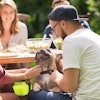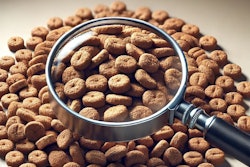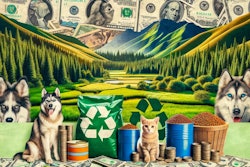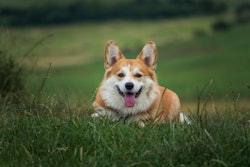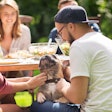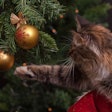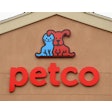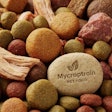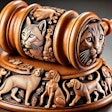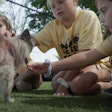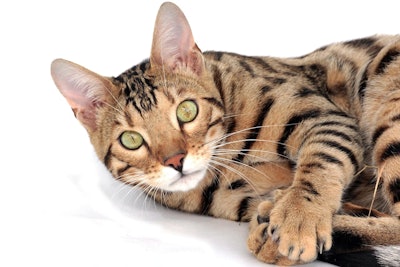
A sharp rise in cat adoption in Bangladesh in the years following the Covid-19 pandemic has triggered a substantial increase in pet food sales, laying the foundation for the establishment of the first local brands.
The number of pet owners in Bangladesh has doubled over the past three years, according to Mohammad Abdul Saleque, a researcher with ACI Limited, a Bangladeshi conglomerate present in pharmaceuticals, chemicals and several other industries.
In recent years, cats dominate the scene — accounting for 90% of pet ownership — since they are easier to keep in apartments, Saleque estimated.
Limited space is one of the key factors why people opt to have cats in Bangladesh, one of the world's most densely populated countries with a population of over 171 million within an area of 148,460 square kilometers.
"The pet sphere is said to be growing at yearly rates of 10% to 15%," Petar Reshovski, general manager of Williams & Marshall Strategy, a marketing research firm, told Petfood Industry.
The upward trend is attributed in part to the surge in pet adoptions during the Covid-19 pandemic, Reshovski said.
Currently, the size of the Bangladeshi cat food market is estimated at BDT 5 billion (US$43 million), of which BDT 4 billion (US$38 million) is met by imports, according to Citizens Voice, a local business publication, which cited local traders.
According to the Bangladeshi Department of Livestock, approximately 32,156 metric tons of cat food were imported into the country during the 2024-25 marketing year. Of this, around 17,738 metric tons came from China, 7,418 metric tons from Thailand and 6,740 metric tons from Turkey. Small quantities were also imported from France and India.
Market drivers beyond pet ownership growth
"Besides the proliferation of pet ownership, other significant trends could be outlined," Reshovski said. Some prominent developments shaping the market include the increase of the middle-class population nationally, coupled with higher disposable incomes and local urbanization trends.
Pet humanization also plays a role, Reshovski continued, explaining that this trend is reflected in pet owners' efforts to provide their companions with conditions and food on par with their own.
However, over the last several years, the number of wealthy pet owners in Bangladesh has declined slightly, primarily due to the country's political turbulence, Babul Howlader, owner of Bird Palace, a prominent pet food importer, told local press. This decline has also taken a toll on the pet food market, he admitted.
In July 2024, a massive student-led uprising in Bangladesh led to the ouster of its long-serving prime minister. Now, more than a year later, the country still grapples with political turmoil, violence and general uncertainty.
Local production emerges amid import dominance
The rise in cat food sales in recent years triggered a boom in pet food retail. In recent years, shops selling pet food have launched not only in the capital, but also in Mohammadpur, Mirpur, Banasree, Dhanmondi, Gulshan, Banani and Uttara, the publication said.
In addition, the first local brands have started to emerge on the Bangladeshi pet food market.
In 2024, Chonk became the first local brand to launch production of dry cat food.
"Our price per kilogram is 332 taka (US$3.20), which is cheaper than imported food. We are also maintaining good quality," Muhammed Asif Khan, a Chonk co-founder, said.
Local production remains somewhat constrained, with only a single factory active since last year, Reshovski said.
"A quick look at some of the online retailers of cat food in the country reveals that imported global brands indeed enjoy increased popularity," Reshovski added.
The Bangladeshi government expects import replacement in the domestic pet food market in the coming years, according to Muhammed Abu Sufian, director general of the Department of Livestock.
"We did not pay attention to pet food before," Abu Sufian said. "So, the market has become dependent on imports. Now the demand is increasing, many are showing interest in producing it locally."
Reshovski added, "Overall, there are various market prerequisites that can suggest a favorable path for local pet food manufacturing going forward."
In 2024, the import taxes for cat food in the country reached up to 50%, essentially making the product rather costly for the average cat owner, Reshovski noted, also adding that there has been evidence of fake or dangerous foods entering the market, highlighting the need for localized production that could provide manufacturers with stricter quality control.
On the other hand, Reshovski continued, the local government does not levy an import tax on the raw materials needed for cat food.
"This favorable governmental policy might act as an additional driver for firms that are considering producing cat food locally," Reshovski said.
The successful example of Chonk, which as of February 2025 reportedly had over 1,000 customers, most of whom were recurring, might well entice more entrepreneurs to enter the market in the medium term, Reshovski stated.
